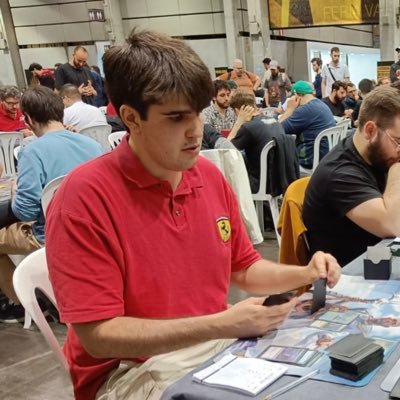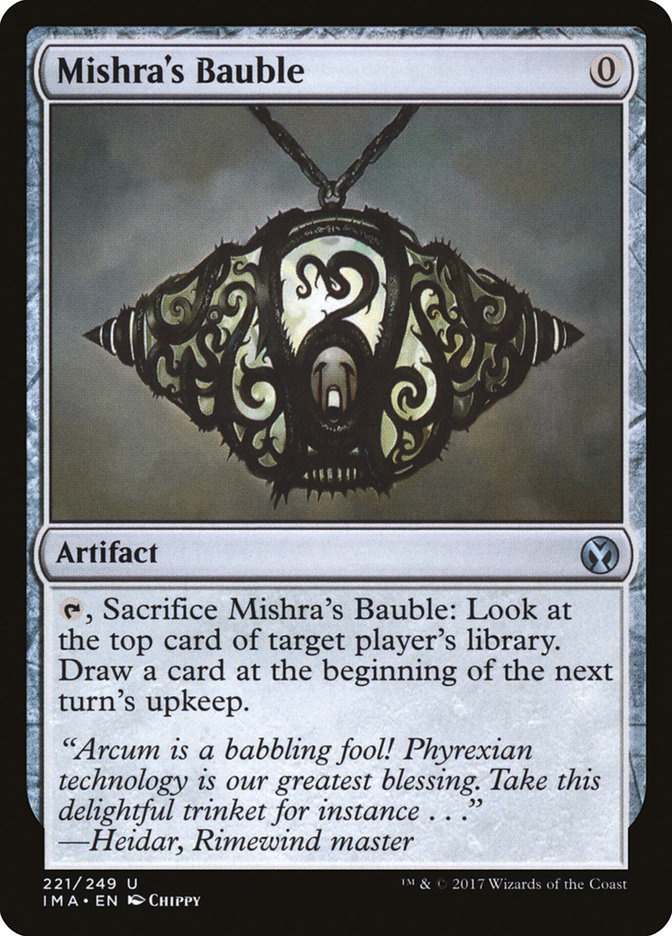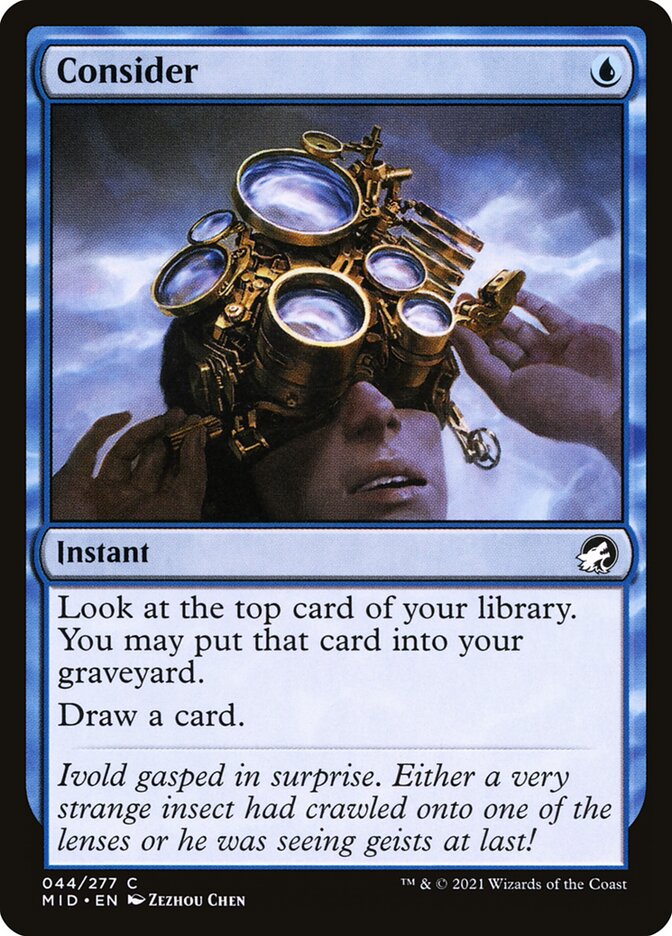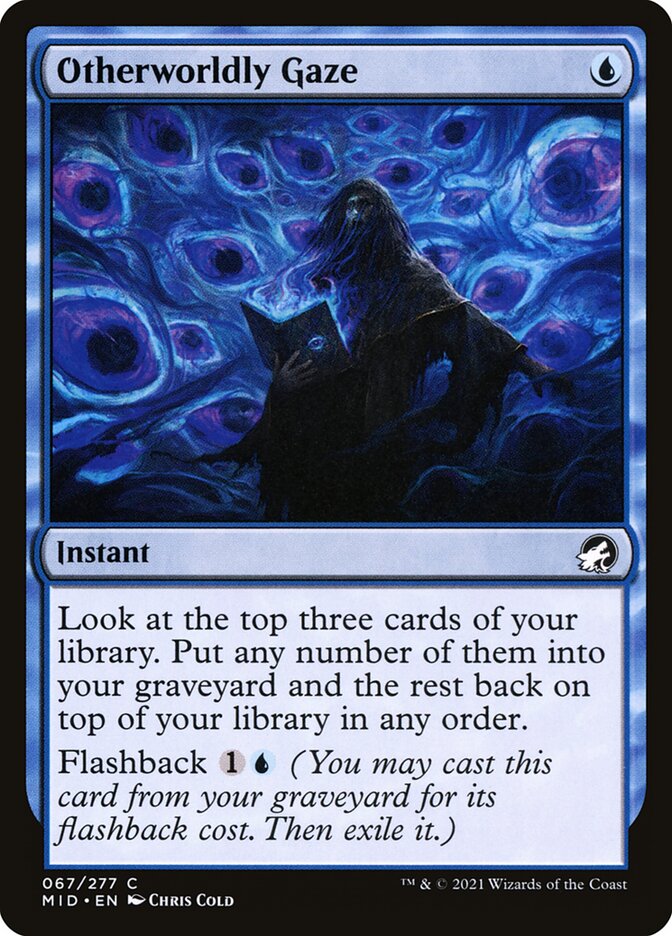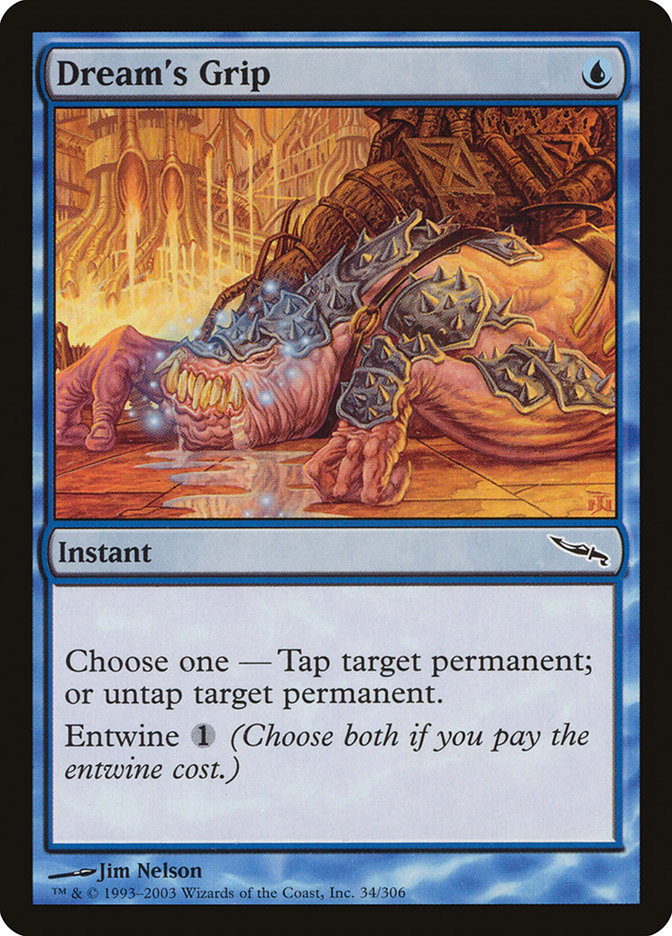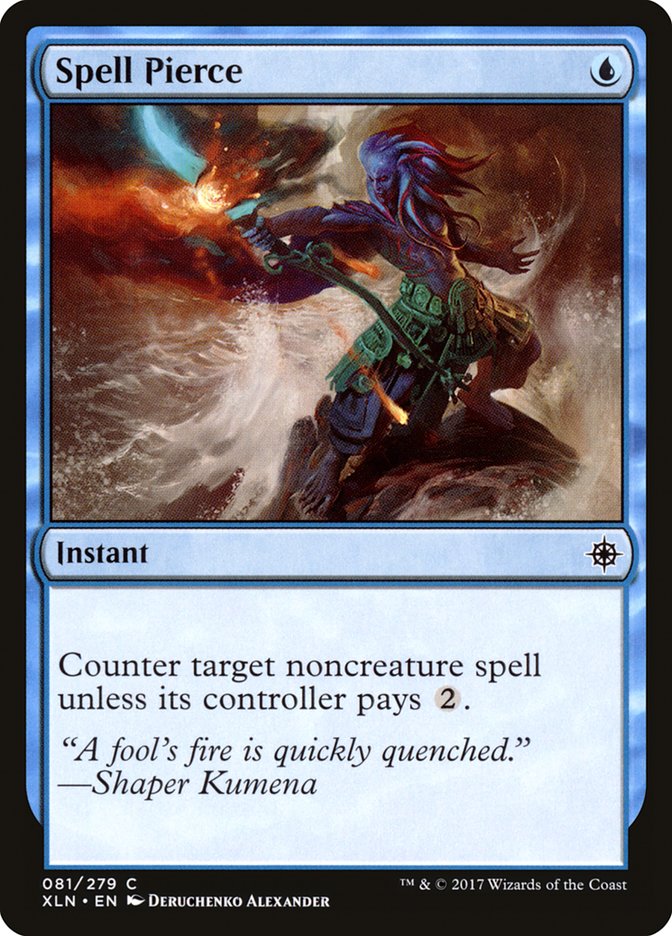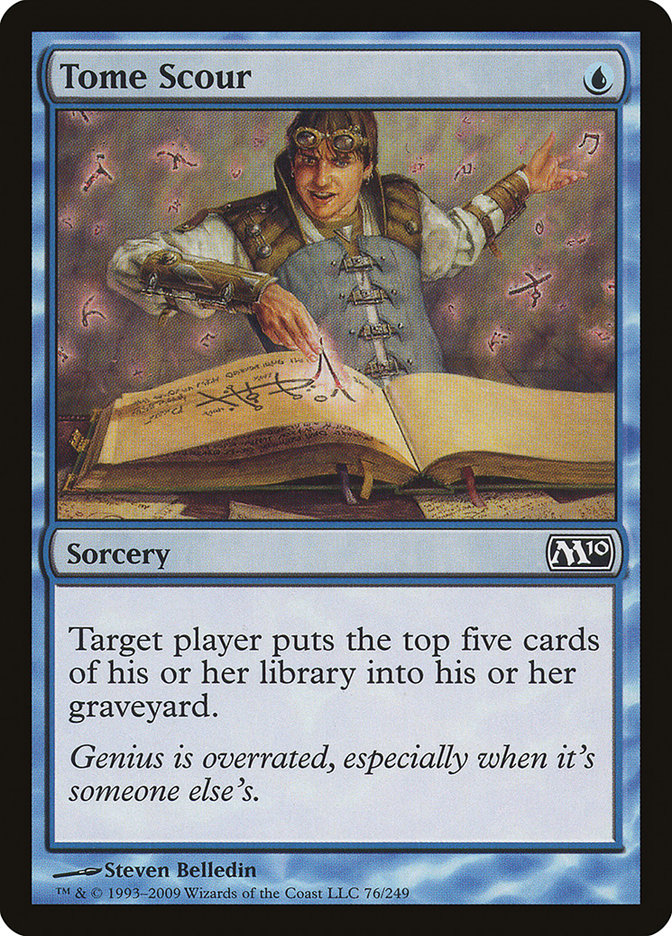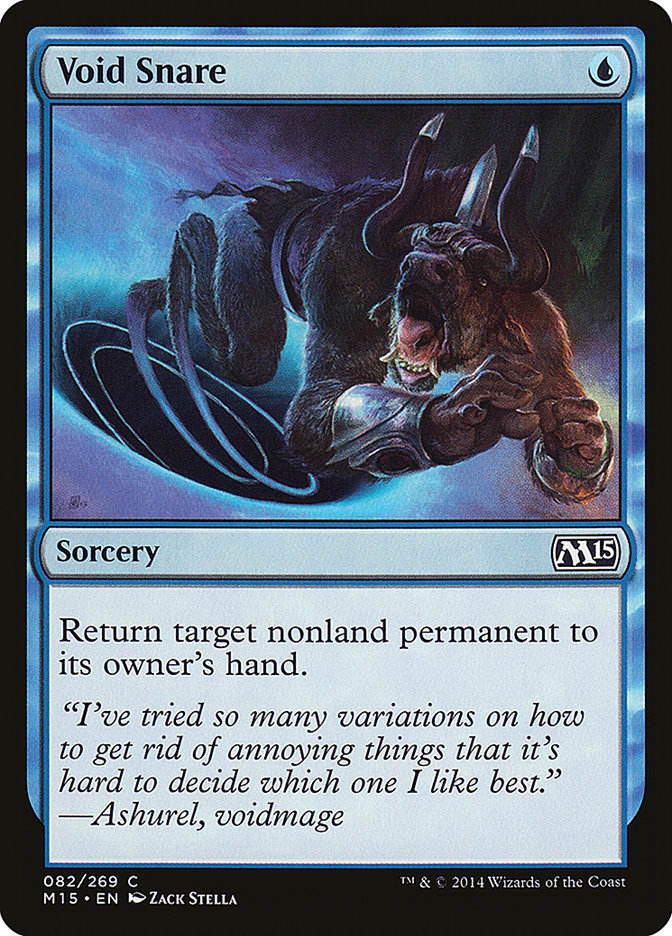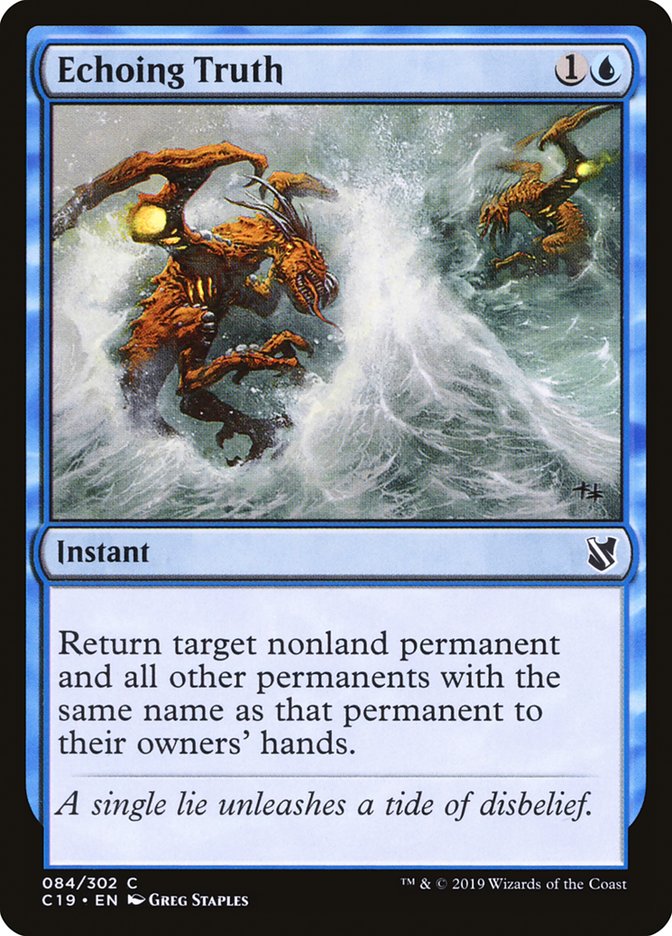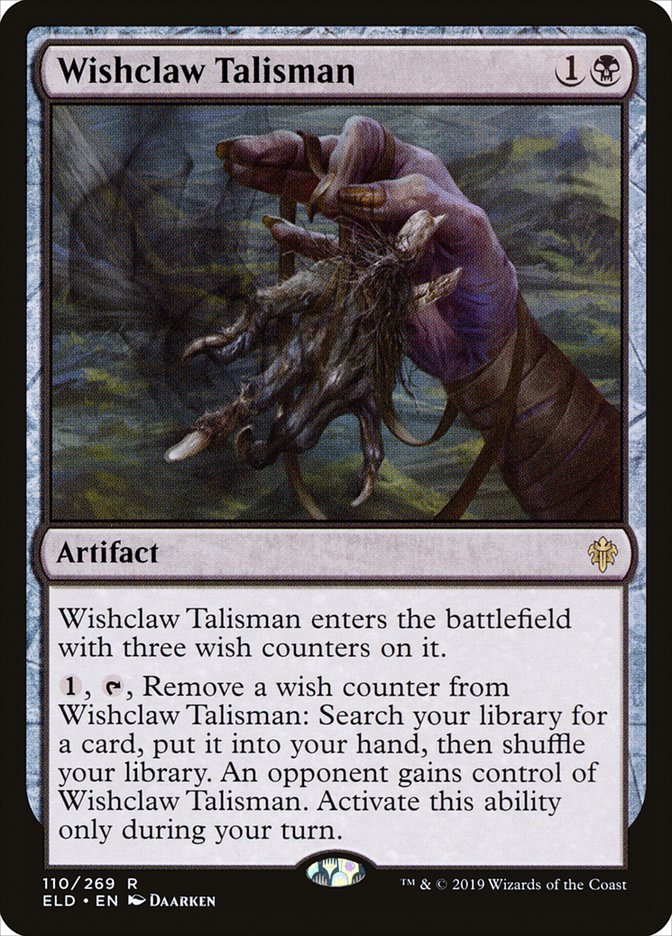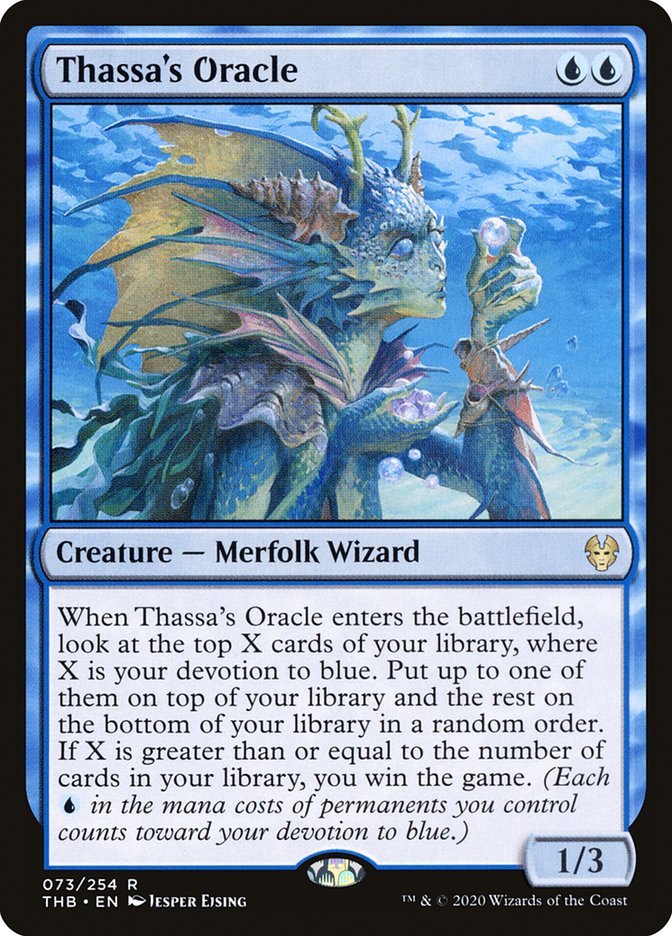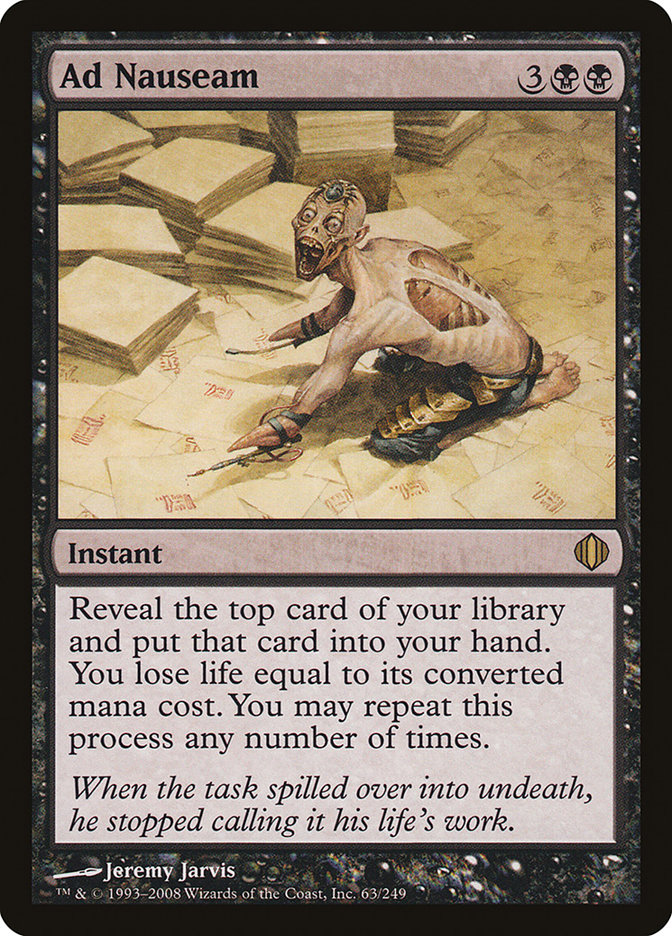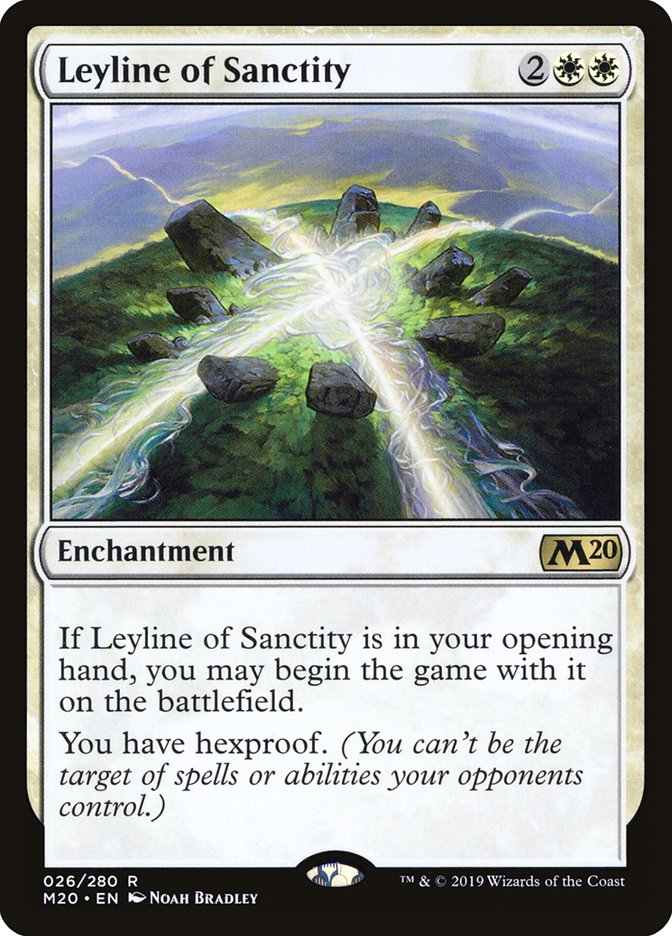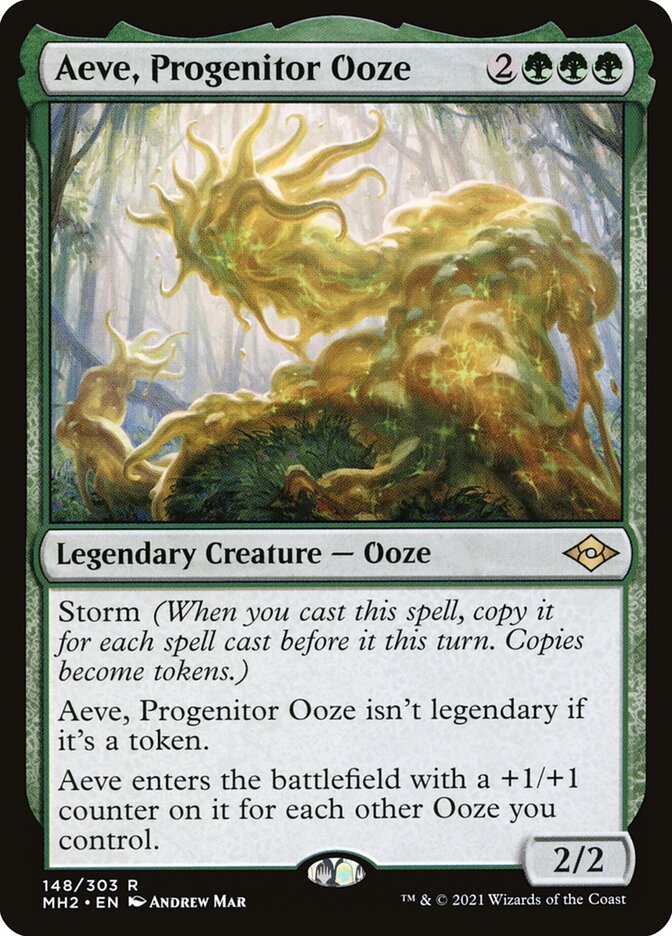Twiddle Storm Combo: In-depth & Sideboard Guide
Twiddle Storm VS the current metagame
In the depths of the Modern format , one can sometimes find bizarre combo decks that, given the correct metagame, can rise and show up.
Today, I will discuss Twiddle Storm, a combo deck that functions thanks to Lotus Field. This land allows Twiddle and Dreams Grip to act as Dark Rituals. This, in conjunction with Underworld Breach, allows us to replay past cards from our graveyard. Thanks to Tome Scour, we can repeatedly mill our deck while increasing our storm count to finally kill our opponent with Grapeshot.
The deck is unlike other Modern combo decks as it has a very consistent turn-three kill with no opposing interaction. However, during the first few turns, the deck operates as a UR tempo deck, cantripping and Spell Piercing the opponents' development.
The Deck

| Artifact [7] | ||
|---|---|---|
| 4 Wishclaw Talisman | $6.99 | |
| 3 Mishra's Bauble | $0.79 | |
| Instant [25] | ||
|---|---|---|
| 4 Twiddle | $0.39 | |
| 4 Dream's Grip | $0.39 | |
| 1 Echoing Truth | $0.35 | |
| 1 Ad Nauseam | $20.99 | |
| 2 Impulse | $0.39 | |
| 3 Spell Pierce | $0.59 | |
| 2 Pact of Negation | $12.99 | |
| 4 Consider | $0.99 | |
| 4 Otherworldly Gaze | $0.39 | |
| Sorcery [4] | ||
|---|---|---|
| 2 Tome Scour | $0.35 | |
| 1 Grapeshot | $0.39 | |
| 1 Void Snare | $0.35 | |
| Enchantment [4] | ||
|---|---|---|
| 4 Underworld Breach | $13.99 | |
| Land [20] | ||
|---|---|---|
| 2 Watery Grave | $15.99 | |
| 1 Steam Vents | $17.99 | |
| 3 Scalding Tarn | $22.99 | |
| 2 Flooded Strand | $29.99 | |
| 2 Polluted Delta | $34.99 | |
| 4 Lotus Field | $6.49 | |
| 1 Tolaria West | $1.49 | |
| 2 Misty Rainforest | $23.99 | |
| 1 Otawara, Soaring City | $24.99 | |
| 2 Island | $0.01 | |
| Sideboard [15] | ||
|---|---|---|
| 2 Gut Shot | $1.99 | |
| 2 Engineered Explosives | $11.99 | |
| 2 Swan Song | $12.99 | |
| 4 Leyline of Sanctity | $1.29 | |
| 1 Pact of Negation | $12.99 | |
| 3 Suspend | $0.49 | |
| 1 Aeve, Progenitor Ooze | $0.49 | |
 $110.49 Tix @cardhoarder
$110.49 Tix @cardhoarder
 $2.76 / Week @cardhoarder
$2.76 / Week @cardhoarder
 $463.20 @tcgplayer
$463.20 @tcgplayer
 $555.63 @cardkingdom
$555.63 @cardkingdom
Card choices
Lands
Starting with the manabase, fetches are crucial for the deck's strategy as we require many cards to hit the graveyard in order to combo off. In mulligans, we often value fetches above basics or shock lands, since the one life point has a marginal impact compared to the card in the graveyard. The inclusion of only five fetchable cards is due to the deck not wanting to overdraw lands, and when none are left, we can still use surplus fetch lands as graveyard fuel. '1x Otawara' acts as another bouncer for problematic permanents, and it has no downside for us.
Mishra's Bauble
Mishra's Bauble is a well-known card that is excellent in conjunction with fetch lands. It smoothens our draws, fills up our graveyard, and thins out the number of cards we need to play in our deck. The Bauble also helps to develop one of the deck's strong points, which is simulating that we are a UR Murktide in the initial turns.
Pro Play #1: Baubling signals
Baubling yourself with a fetch land in play often gives the opponent a clear indication that you are playing Murktide. This might lead them to adopt an over-aggressive role in the game, which presents an opportunity for a one-turn kill out of nowhere.
Pact of Negation
Pact of Negation is also crucial as a defensive resource. It works excellently with Breach, as once Breach comes into play, you can cast it with escape. This protects you from permanent disruption effects such as Leyline Binding, Force of Vigor, etc.
Cantrips
The choice of cantrips is straightforward. Consider is the best cantrip for strategies that leverage the graveyard. Otherworldly Gaze suits the deck perfectly since our deck is less concerned with the quantity of cards drawn and more with the quality of cards drawn.
Even if the card doesn't replace itself, the fact that it can put some combo pieces in the graveyard and continue developing us is advantageous.
Pro Play #2: Underworld Breach + Lotus Field loops
Otherworldly Gaze can also loop with Twiddle from the graveyard in order to find Tome Scour and mill our entire deck. This is great when you have either a lot of mana or many cards in the graveyard, but you are still searching for Scour.

This is because Gaze can be escaped, putting all three cards seen in the graveyard. As a result, you remain at the same number you started with, but altering the content of your graveyard.
Doing this in conjunction with Twiddle makes us lose 3 cards every time we see 6 (we escape two Gazes and a Twiddle, which requires nine cards to be exiled, and we put six new ones in the graveyard).
With enough cards in the graveyard, one can easily calculate how long it will take to find a Tome Scour and optimize the use of this trick.
Twiddle Effects
Twiddle effects are simple as they act as mana producers during the storm turns for the deck. However, these are the most complex cards to play due to their versatility in disrupting the opponent. More often than not, games play out with opponents trying to slowly develop their plan, keeping scarce interaction available with only a few mana. This means we can use Twiddle to tap their land at the end of a turn, allowing us to safely execute our combo.
It's also useful in preventing Ragavan from connecting, in case we have extra Twiddles. By doing this, we slow down our opponent's curve. The deck rarely needs more than one Twiddle to combo.
The deck rarely needs more than one Twiddle to combo
However, against soft disruptions like spell pierce, keeping an extra one allows for a safer all-in.
Pro Play #3: Entwine to cover our combo
The entwine mechanic in Dreams Grip is quite convenient when drawn from the top during a combo turn. With a Lotus in play, we can entwine it, untap our Lotus, tap their land, and then switch to the second main phase to disable their plan.
Spell Pierce
Spell Pierce is a cheap interaction that slows down our opponents while helping us protect ourselves during our combo turns. The second scenario is less common because Spell Pierce becomes a less effective protection spell as the game progresses. However, the fact that a turn three combo deck can have access to cheap counterspell that effectively fights other combo decks in the format gives us a significant advantage against them, such as Creativity and Rhinos.
Tome Scour
Tome Scour is arguably the worst card in the deck. It's only beneficial when we are low on resources and have excess mana, allowing us to initiate a Breach combo turn. Otherwise, the card is subpar and solely useful for the combo, although it has some marginal applications against deck manipulation. However, it's crucial to cast Tome Scour as soon as possible, as it provides a better understanding of the tools we have once the Breach resolves. It sometimes assists in finding Pact of Negation which can simplify our decision to wait or proceed.
Flex Slots: Void Snare & Echoing Truth
One Void Snare and one Echoing Truth have been flexible slots in the deck for some time. They serve as interaction for problematic permanents in the main deck of certain decks, such as Chalice of the Void (occasionally seen in control variants) and Dauthi Void Walker (common in SCAM). Echoing Truth is surprisingly effective in some matchups as disruption, thanks to being an instant. This aids in time-walking against Hammer and clearing multiple Rhinos from the board.
Wishclaw Talisman
Wishclaw Talisman is a complex card for the deck. It serves as additional copies (5-8) of the most important combo pieces, namely Lotus Field and Breach. If you need a card to continue setting up, don't hesitate to give it to your opponent. More often than not, they will be very skeptical about returning it.
Pro Play #4: Twiddle Tutoring
This card also offers interesting strategies in conjunction with Twiddle, as we can hold the priority and untap it.
We can use the ability, hold the priority and untap it with Twiddle
This makes our Twiddles become extra tutors. With two Twiddles and five mana, we can search for three cards in our deck and leave our opponent with a counterless talisman. Playing this card early in the curve is risky, and unless it's crucial for the plan, I prefer to hold it in hand.
Playing it early exposes it to Prismatic Ending and other disruption effects. More importantly, it often telegraphs our hand quite easily.
Win Conditions: Grapeshot VS Thassa’s Oracle
Grapeshot, our only win condition in the main deck, is interchangeable with Thassa’s Oracle. However, the Oracle has no impact on the board in the early turns (such as killing a Ragavan or finishing off a 3 cmc Teferi) and it requires the combo to pass through the graveyard in most scenarios. Given the inclusion of The One Ring by many decks after the release of Lord of the Rings, the protection this card offers might be problematic. They might find the interaction they need, which might justify the return of the Oracle.
Other Tutors
Grim Tutor and Ad Nauseam play interesting roles in the deck. Grim Tutor acts as the fifth talisman, which is numerically relevant. Sometimes, when comboing off with one Twiddle, one Tutor, and nine other cards, escaping two Twiddles and casting the Tutor allows us to go off. The inclusion of a fifth one, therefore, increases the number of wins we get when dumping cards in the graveyard during our natural development.
Ad Nauseam is very interesting; it is our way to beat graveyard hate most of the time. Removing all scenarios that involve having Grapeshot already in the deck, Ad Nauseam often draws us 15 or more cards from the deck. This allows us to generate a sufficient storm count to cast Grapeshot for lethal damage (against 'Leyline' or 'Rest in Peace' effects), or to cast 'Breach', followed by 'Grapeshotting' them. This is with a way to generate cards in the graveyard in case they decide to pop a Relic of Progenitus or a Soul Guide Lantern.
Pro Play #5: Ad Nauseam Math
The instant-speed of the card is very nice and the deck’s average converted mana cost before sideboard, excluding Ad Nauseam, is 0.76. This fluctuates depending on draw patterns but never increases above 1.
Lately, I have been trying Impulse in the slot of Grim Tutor, and it has at times felt smoother. It's less deterministic as a win condition in the graveyard but allows for early development. The fact that it uses blue mana when comboing is convenient. Both options are fine.
Sideboard Choices
The sideboard is still up for discussion and is very dependent on the meta for this deck. However, I would say there are some slots that should remain rigid. These are the 4 Leylines of Sanctity, 1 or 2 Pacts of Negation, 3 Suspend and 1 Aeve, Progenitor Ooze.
Leyline of Sanctity
Leyline of Sanctity offers our best chance at overcoming one of our most challenging matchups, which is SCAM. By disabling their interaction with our hand, we only need to address their problematic permanents. It's also highly effective against Yawgmoth as it prevents their discard after sideboarding and their endurance.
Pacts of Negation
Extra pacts are necessary in the endurance matchups and against heavily counter-based decks like Murktide, Rhinos, and others. Suspend may not be an ideal card and alternatives like Dismember could be considered. However, its crucial feature is its ability to circumvent Feign Death, enabling us to tackle a Dauthi Void Walker without the risk of it returning.
Aeve, Progenitor Ooze
Aeve is included as an additional win condition. When encountering mild graveyard opposition in the Murktide matchup, we might discard a Grapeshot prematurely, causing it to be exiled with a Hearse or Relic. Aeve aids us in winning these games but can also substitute for Ad Nauseam in the matchup. After repeated twiddling, you can use Aeve for storm 3 or 4, which should secure the game.
Tips and tricks
Tip #1: The Relevance of Steam Vents
This deck, when comboing on turn 3 with one Twiddle, needs to use one of the two untapped lands to play Twiddle and untap Lotus Field. Therefore, scenarios arise where searching for Steam Vents proactively in the first turns (even if we don't have red cards) is relevant.
If neither of the two lands are red, you have to use your Lotus Field to pay for 3 red in order to cast Breach. This leaves you with only one blue mana open to continue your combo turn, which means you can't play soft interaction at that point. Having fetched Steam Vents allows for the Lotus to tap for 3 blue, which enables combo turns with protection in case we have a hypothetical Spell Pierce. This ties into the next tip, which comes into play when the previous one isn't possible.
Tip #2: Otherswordly Gaze to the Rescue
If the Steam Vents had been milled for whatever reason, we sometimes find ourselves with 1 blue and 1 red floating when comboing. If we don’t have enough cards in the graveyard, we can't combo with this using Tome Scour and Twiddle, since the Scour would have to be played first, leaving us without blue mana. However, there is a workaround involving Otherworldly Gaze. Flashing back Otherworldly Gaze allows us to convert this red mana into more cards in the graveyard (since the escape cost isn't being used), which then allows us to comfortably cast Tome Scour.
Tip #3: Dealing with Boseiju
Boseiju is a complicated card to deal with, but there is a way to consistently beat it. When fighting Boseiju, try to generate excess mana and have a Breach in hand and one in the graveyard. After casting Breach, choose to first play the Breach from the graveyard before proceeding to go off.
Tip #4: Use Your Mana the Right Way
The last trick is to always cast Tome Scour if you have excess mana before Breach. Hitting a Pact can help you protect Breach from permanent disruption. Similarly, if you anticipate that your opponent only has Endurance, hold it in hand, and they will have to respond to Breach with Endurance, allowing you to still go off after Endurance resolves with the Scour from hand.
Sideboard guide
5c creativity
Very favorable. Spell Pierce excels in interacting with their development. Cut their Wrenn and Fables and just cantrip your way to a safe combo; they can't interact with the graveyard.

Murktide
Tense matchup, ragavan vs non ragavan games are very different. On the draw look for faster combo hands that attack scarcity in mana, on the play look for quality in cards, in my experience opponents tend to undervalue ragavan on the draw.

Hammer
Once again, Esper sentinel vs non Esper sentinel hands mean 2 different games. Sentinel is easily the best creature against the deck since we need to curve anyway, and they end up drawing 2 cards as a bare minimum before we win, it's a race, but twiddle can act as a time walk.
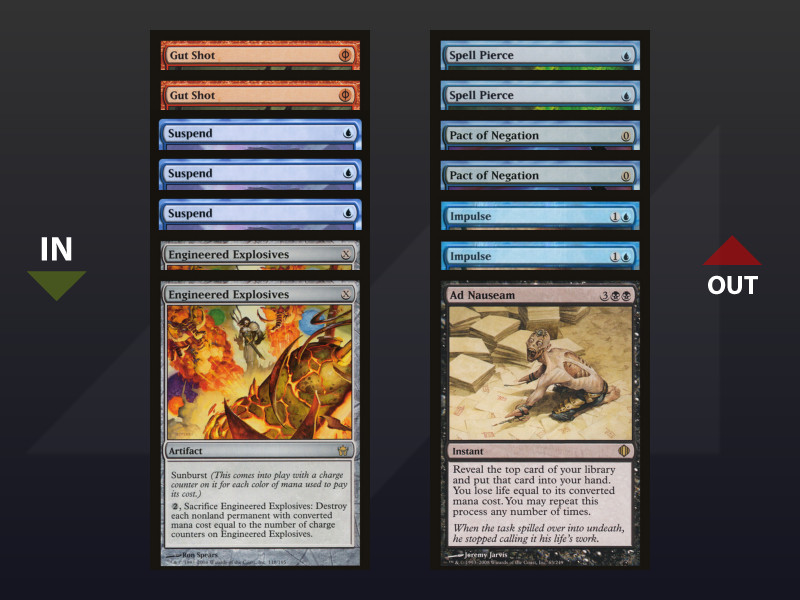
Rhinos
Again a favorable matchup. They have a lot of interaction, but it is very weak as it requires tapping out as sorcery when they can't pressure prior (blood moon), or staying open mana endlessly (endurance, fon etc). We deal with rhinos easily, so just wait. Force of vigor is very bad since we have many pacts, as soon as breach comes into play it's lights out.

Living end
"This is a very bad matchup. Their interaction is both proactive and reactive, at the expense of zero mana (Grief and fon). Unlike vs Rhinos, we don't have many cards that are effective against them (explosives). This means that their combo turns are stronger, and we have to respect them more. They might use Leyline or Endurance. If Leyline is seen after the sideboard, Void Snare can be used, removing a second Impulse.

4c omnath
Pretty favorable. The only problematic card is Teferi. We don't have an efficient way to deal with it and it prevents us from interacting. Be wary of Boseiju; they run multiples after sideboarding. If possible, tap their green source whenever they only have one available before you start the combo.

Scam
Complicated matchup. Some lists nowadays are replacing Dauthi with Orcish Bowmasters, which significantly improves the matchup. Playing around all their hate can be challenging, but try to look for fast hands and more often than not, keep Echoing Truths on top or draw them, even if you are searching for other pieces.

Burn
50/50, it's a race. Creature hands have an advantage against us for obvious reasons, especially after the sideboard when Leyline comes in (I tend to mulligan aggressively for it). Most lists now don't run Eidolon, but I'd still recommend playing Tome Scour aggressively in empty turns to avoid mana problems in turn 3 for going off.

Tron
If they hit Tron on 3 and have a highly disruptive element (4cmc Karn or The One Ring), the matchup becomes very tense. Searching with Karn is not easy for them, and Trinisphere does almost nothing against us since tapping it with a Twiddle nullifies its effect. Pierces are highly valued in this matchup, as they allow us to disrupt their early development while increasing our graveyard count.
No changes
Yawgmoth
Endurance and discard are the names of the game. Sometimes something more specific, like Necromentia, joins the conversation, but Leyline is very effective against all of their disruption. Force of Vigor can get rid of it or Breach, but as outlined before, FoV is very bad at dealing with Breach. Mulligan to Leyline any hand that doesn't kill by turn 4 with some resilience to a discard spell.


